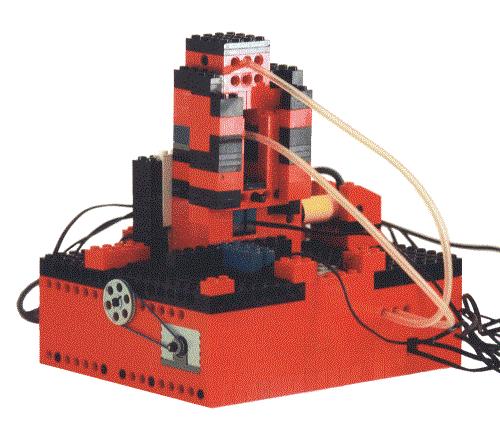
Meet Obstinadísimo. The name means “very very stubborn” in Spanish. This is the final robot of my five-year LEGO robotic vision project, and it can “read” letters using two recognition algorithms. This robot and the robots described below won the Best of Show title in the Florida State Science and Engineering Fair and went on to the International Science and Engineering Fair. In addition, the project won recognition in the Intel Science Talent Search.
Robotic “Reading”
One of the ways that the robot “reads” is by using an artificial neural network, which is essentially a computer program designed to be like the human brain. The network is “trained” by giving it many characters to “read.” It gradually “learns” to distinguish patterns, as shown below:

Another way that the robot “reads” is by analyzing letters in terms of lines and spaces, as is illustrated to the left. I developed this algorithm, and in the final tests of the robot it was shown to be more effective than the artificial neural network.

Meet My Other ‘Bots
 |
These are the sorting robots from the first two years of my project. The robotic arms pick up colored blocks, identify the color, and drop the blocks into the bin designated for blocks of that color. |
 |
This robot was called Car-Car (at the beginning of the project it did resemble a car!) It used its forklift to lift the bins of sorted blocks and transport them away from the sorting robots. |
 |
This is the second version of Car-Car, nicknamed Midgie because it was a midget in comparison to Car-Car. It also functioned as a block transporter. |
 |
The successor to Midgie, Squirt was the smallest of my mobile robots. It could find and follow a line drawn on the ground, making its trajectory much more predictable than with either Car-Car or Midgie. |
 |
This is Obstinado, the successor of the sorting robots. In the fourth year of my project it was programmed to recognize barcodes, and in the fifth year it was extended to recognize letters. |
